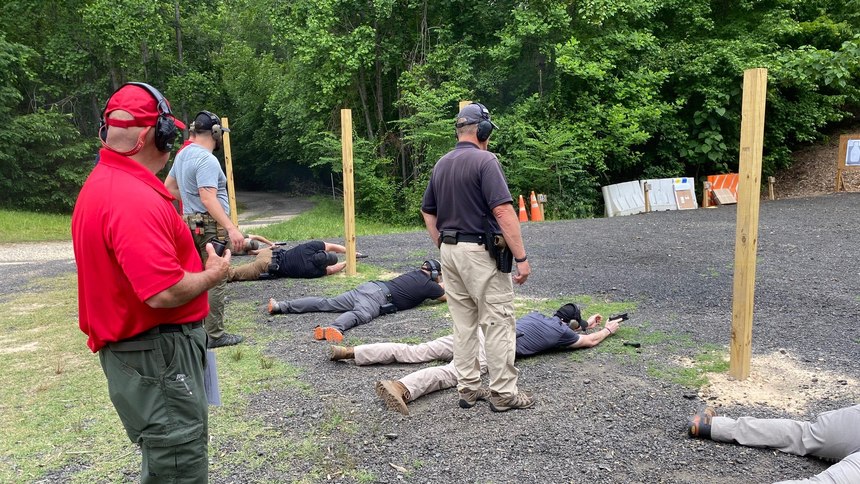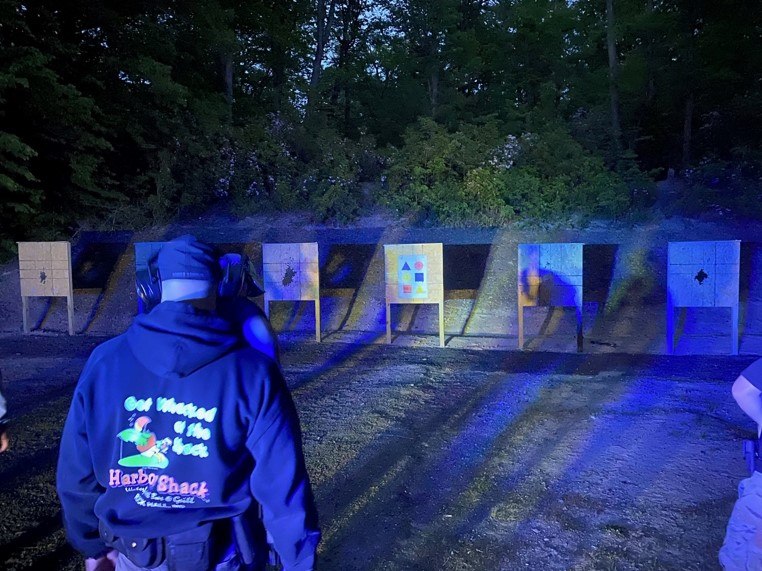By Lieutenant Matthew T. Borders
With budgets tightening and ammunition harder to find, here’s a four-step approach for departments to uphold firearms standards for officer safety, professionalism, and evasion of responsibility.
1. Conserve ammunition
Shooting courses must address critical skills such as moving and shooting, shooting from cover, and recovering from unexpected contingencies such as weapon failures and transitions. Document these drills over time so you can demonstrate training that provides essential officer survival skills.
Since firearms skills are perishable, firearms training must occur at least twice a year to maintain these skills. One training date should focus on marksmanship and scoring, while the other should focus on tactical skills.
Marksmanship and qualification
Create dry fire drills that develop marksmanship. Some of these drills should work for officers to get their weapons out of the holster by starting slowly and increasing speed. The old adage “slow is smooth and smooth is fast” is true. Have the officers draw their gun, aim at the target and pull the trigger. The instructor can actuate the slide so that the officer can pull the trigger again. This can be repeated, or the officer can holster the weapon and start the drill again. There are many other dry fire drills out there, but don’t use too many of them because students may get bored.
Another drill that helps accuracy and uses less ammo is a hole-by-hole drill. Line up the officer at the three-yard line and have him draw and fire a round at the target at low speed. The officer stays on target and attempts to hit the same hole left by the first round with the next two rounds. This exercise emphasizes sight alignment and trigger control and uses very little ammunition.
Have students shoot targets from the 25 and 50 yards after some of the basic drills. When students realize they can shoot accurately at longer distances by employing good sight alignment, trigger control, and manipulation, shorter distances seem so much easier and confidence soars. As confidence builds, you’ll find that previously fringe shooters are more inclined to attend range dates.
Plan shooting courses in advance of the training date to keep ammunition counts within budget.
Police resource1: Excellent firearms training with low ammo count drills

Shooting courses must address critical skills and recovery from unexpected contingencies. (Photo/Matthew Borders)
Tactical firearms training
Unfortunately, many departments go to the range once a year just to qualify their officers and do not provide tactical training. This is a huge responsibility, and departments are doing their officers a huge disservice in terms of officer survival.
Tactical training is essential. Here you will want to use shooting courses that teach combat rather than marksmanship skills. These abilities include moving while shooting, moving then shooting, seeking cover, getting out of X, and working with flashlights. Shooting decision making courses, such as to shoot or not to shoot, should be conducted during this training. These drills give officers practice in articulation and teach that weapons discharges are not the only result of potentially hostile targets. Departments that use outdoor shooting ranges should schedule training later in the day to get some low-light shots.
This type of training requires a close student-to-instructor ratio to maximize individual instruction. Some courses require running the course one student at a time for security.
Box drills allow students to work on the move and then shoot or you can restructure it to shoot on the move. Allowing students two rounds per target allows you to emphasize accuracy as part of the drill. The instructor can even run the drill by time and add time to failure to increase stress, introduce proficiency and improve performance levels.
Have barricades at the shooting range and run drills that have the student seek cover and get off the X. Incorporate drills that simulate urban environments by placing friendly and hostile targets on the shooting range. Many of these exercises can be easily done with ammunition limited to 10 to 15 rounds.



Having shoot-or-don’t-shoot drills where targets must be identified with a flashlight simulates real-world scenarios. (Photo/Matthew Borders)
If officers carry rifles or shotguns on patrol, weapons transition drills should be part of this training. Design the course of fire around moving with each weapon and then transitioning to the pistol at shorter ranges (letting the long pistol dry out as the distance closes is a good way to force transitions). Also, consider having students display the weapon the way they are carrying it. If the long gun is stored in the trunk of the car, have a car at the shooting range and have the students get out of the car and get the gun from the trunk.
Incorporate low-light shooting drills. Having shoot-or-don’t-shoot drills where targets must be identified with a flashlight simulates real-world scenarios. Also, use drills where the student must reload or misfire their weapon in low light.
Finally, incorporate non-shooting training elements, such as flashlight deployment, into regular roll call, control tactics, and active incident response training.
Police resource1: How to set up a low light training exercise
2. Use of technology
Officers must be trained in force-on-force scenarios and in making shoot/don’t shoot decisions. Simulators provide this training without using ammunition.
Review use of force videos and earn training points from them. Many good use-of-force videos can be viewed from media sources such as YouTube and provide valuable training.
Police resource1: How simulator technology improves police cadet training
3. Support programs
Cleaning the range provides a valuable commodity, brass. Most brass can be sold. Small departments can collect hundreds of dollars from spent brass collection and this can be put back into the training budget.
4. Instructions not to shoot
A comprehensive firearms program will incorporate more than just shooting. Instructors must address off-duty safety; lead safety; review the use of force, general orders on firearms, jurisprudence on the use of force; and annual weapons inspections. Document all of these items.
conclusion
Even if you have limited resources, your training should not be limited. By being selective in creating firearms training courses, using firearms simulators, and developing sustainment programs, you can deliver quality training.
NEXT: How to buy firearms training equipment
About the Author
Lieutenant Matthew Borders is a lieutenant in a medium-sized police department in Northern Virginia. He has a total of 23 years in law enforcement and has served in four different agencies. Lt. Borders has been a Department of Criminal Justice Services Certified General Instructor since 2004 and a Certified Firearms Instructor since 2009. He has developed, created and administered a Firearms Instructor Development Class for the Regional Justice Academy Rappahannock prison.
